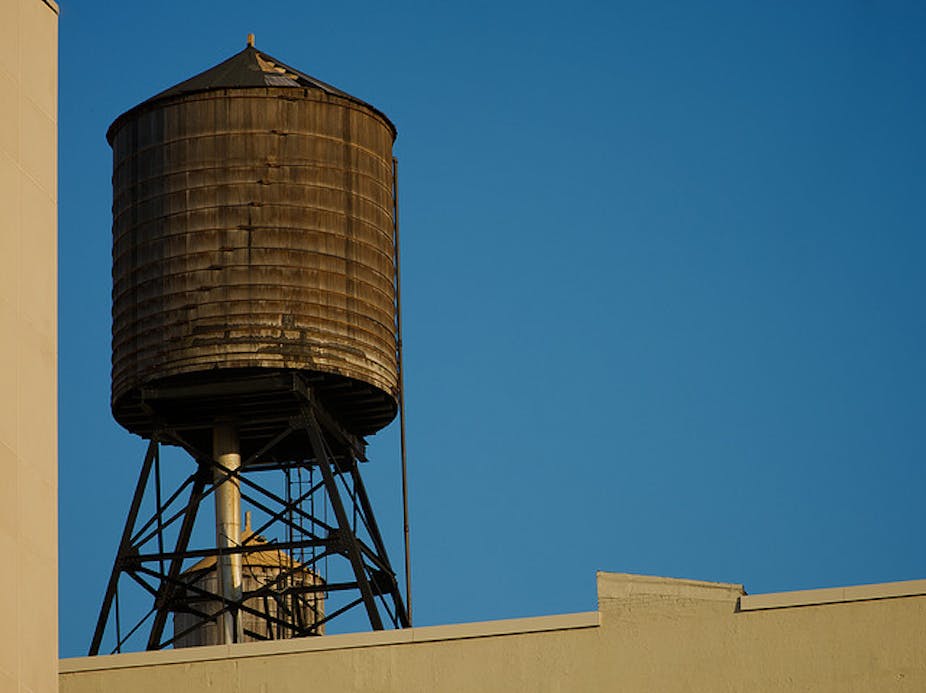Every few weeks or months we see another outbreak of the potentially deadly legionella bacteria. Today, it’s a regional South Australian hospital, where 36 aged residents have been exposed to a contaminated hot water system.
So what is Legionnaire’s disease? And should we be worried about these legionella outbreaks? Associate Professor Richard Bentham, Lecturer of Public Health Microbiology at Flinders University, explains:
Legionnaire’s disease is caused by a bacterium that infects the lungs and causes quite severe pneumonia.
It may vary from being quite mild (and almost unnoticed) to being a life-threatening disease that infects the cells in the lung called macrophages.
This causes them to break open and release toxins that damage the lungs. Legionnaire’s disease deaths are usually from heart and lung failure.
How common is it?
In Australia, epidemiologists estimate there are between two and three cases per 100,000 people each year. So it isn’t a huge number, but in terms of the prevalence of community-acquired pneumonia, it would easily be in the top five, possibly in the top three, most common.
How is it transmitted?
Generally, if we’re talking about from water systems, it’s believed to be by inhalation of aerosols, which are very fine water particles that you can’t see. If you can see it, it’s not an aerosol, it’s a mist.
If it is an aerosol, the water droplets are fine enough to be inhaled very deeply into the lungs, into the aveolae (the little air sacks in the bottom of the lungs) which is where the infection starts.
What are the common causes?
Major outbreaks – such as the Melbourne aquarium outbreak – are generally associated with cooling water systems. But any system that has warm water and produces aerosols can be the cause Legionnnaire’s disease.
This includes spa pools, showers, cold water faucets and even grocery misting devices (the things that spray fresh water on vegetables in supermarkets and which have been implicated as a cause of the disease).
What causes some strains to be more harmful than others?
This group of bacteria are what we call opportunists. They aren’t really looking to cause infection in humans; they’ve adapted to causing infection in amoebae, and they do that with varying degrees of ability.
The organism that causes the most problems for us is Legionella pneumophila, which was the first Legionella strain identified (in 1976).
The bacteria’s ability to cause infection is variable and depends, in part, on the immune status of the person and on how well they are able to infect these cells.
Some Legionella pneumophila strains, for instance, never cause infection and never cause disease.
Every few weeks or months we hear of a new outbreak of Legionnaire’s disease – when should we take note?
With two to three cases per 100,000 a year, Legionnaire’s disease is a drop in the ocean compared with other diseases.
But it does tend to alarm people – they can be walking down the street and inhale it and become infected through no fault of their own.
The areas where we should be most cautious about are the areas of highest risk. So if you’re thinking of immune-compromised people and those with a low immune status, we need to be most careful in aged-care facilities and hospitals.
These are high-risk areas where we should have a proactive management system to prevent exposure.
How, then, do we prevent exposure? And when we know there has been an outbreak, how to we minimise harm?
The way I’d advocate, and the way the World Health Organisation would advocate, is that we take a “multi-barrier” approach.
There are a whole lot of steps that have to happen for someone to contract Legionnaires’s disease. The final step is to be immune-compromised and inhale the aerosol.
If you work backwards from there, the barriers are:
1) Making sure infected aerosols don’t get inhaled. So you go to your shower rose or your spa pool or your tap faucet and check they’re properly maintained. Are they kept clean? Do they drain? Are they at the correct temperature?
2) You then work back to the thermostatic mixing valve, which will regulate the temperature in those sort of facilities and check it’s been properly maintained: Has it been taken apart and cleaned, as it should be, according to the manufacturer’s recommendations?
3) Then you go to the hot water supply and check it’s running at the temperature it’s supposed to. It should be running at somewhere between 55 and 60 degrees Celsius, which would kill the legionella bacteria.
4) Then you go back and check that the boiler is properly maintained: Is it free of sediment? Is it operating at the correct temperature?
5) And finally, you go back and check that the water storage (which is usually a large tank sitting on the roof) is clean, has been disinfected and is covered (so you don’t get dead pigeons and stuff falling in it).
So each one of these is a barrier. You work back from five to one to ensure your water is safe.
In serious outbreaks such as the one we saw at the Melbourne Aquarium, where four people lost their lives, what kind of breakdown of process occurred?
Just about everything that could go wrong went wrong at the Melbourne Aquarium, even down to disinfection.
A lot of that comes back to design and good maintenance. There is no evidence to show that well-maintained and well-designed cooling towers, spas or building systems are a source of Legionnaire’s disease.
With older hospitals that pre-date Legionnaire’s being recognised as a disease (1976), it’s not always possible get well-designed systems. A 40- or 50-year hospital’s design may already be working against it, in which case, maintenance is the key.
We need less of an emphasis on sampling for the organism and more of an emphasis on providing good-quality water and maintaining those barriers.

